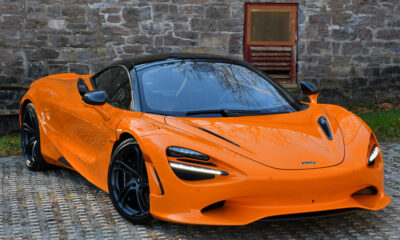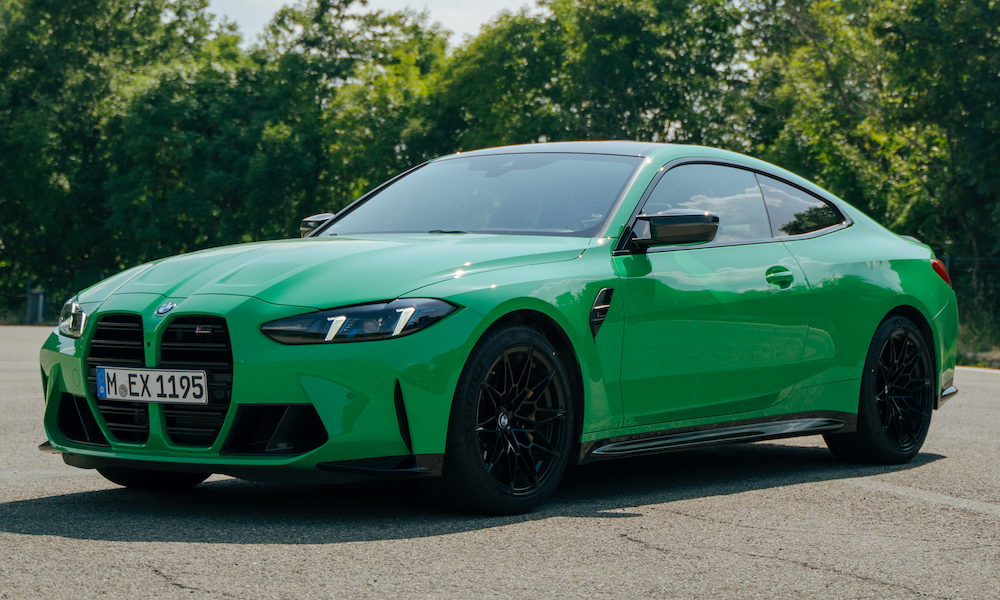
Photo: BMW
BMW’s G82 M4 attracted a fair bit of controversy when it was first launched in 2021, most notably because of its exterior design. Look beyond that, however, and you’ll discover a GT car with plenty of upsides.
The M4 Competition is the version that sits closest to the M4 GT3 that currently competes in the IMSA WeatherTech SportsCar Championship, FIA World Endurance Championship and other series around the globe.
That is partially due to its engine, with the road car powered by BMW’s S58, 3.0-liter twin-turbocharged inline-six engine producing 530 horsepower and 650 Nm of torque.
It’s this same S58 engine, although obviously heavily race-prepped, that has powered the M4 GT3 to victories in the likes of the CrowdStrike 24 Hours of Spa and Mobil 1 Twelve Hours of Sebring.
Unique to the M4 Competition is the gearbox: an 8-speed M Steptronic Sport automatic transmission not available on the regular M4. Furthermore, the Competition is set apart from other M4 models by a number of other features.
Apart from Competition badges on the front, side and rear, it is also visually distinctive thanks to black chrome exhaust tips, gloss black mirrors and special forged alloy wheels.
A special mention also should go out to the unusual color on this particular M4 Competition. It’s called Signal Green and is not available as part of the standard range of paint options. Instead, it can only be obtained as part of the BMW Individual program.
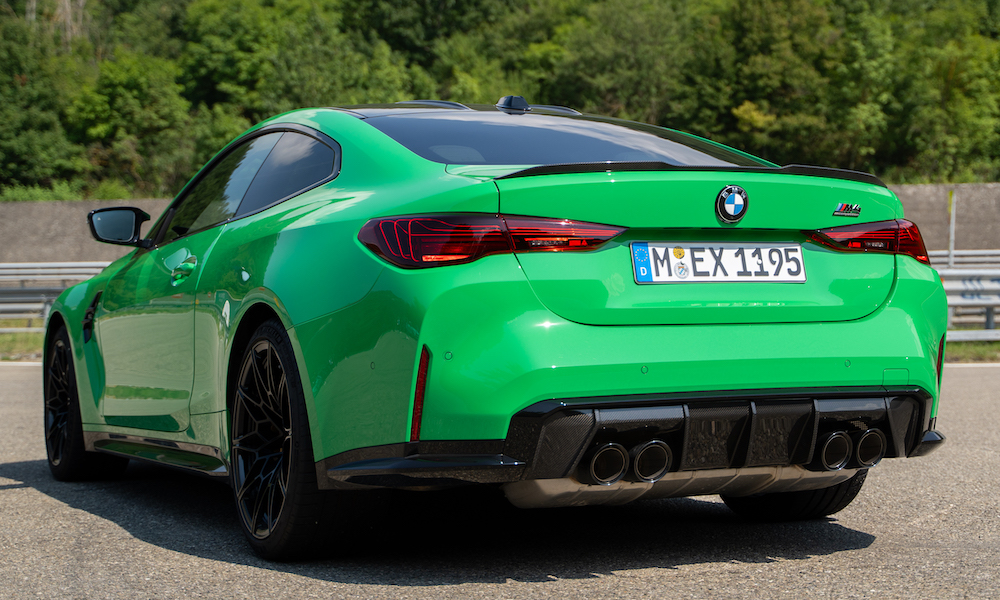
Photo: BMW
This particular example of the M4 Competition was the xDrive version, meaning it came equipped with all-wheel drive.
From a purist’s point of view, this feels a little bit wrong, almost a bit sacrilegious. After all, shouldn’t a fast BMW be a front-engined, rear-wheel drive car? It’s what the brand’s reputation was built on.
To counter those claims, BMW appears to have come up with what can be described as all-wheel drive with a twist.
For one, the brand states that xDrive maintains a rear-biased power split at all times. That means that, even in the basic ‘4WD’ mode, most of the power is sent to the rear wheels.
Even then, that can be tweaked even further with a mode called ‘4WD Sport,’ which distributes even more of the grunt to the rear. But even if that isn’t enough, BMW hasn’t completely lost touch with its roots. There’s the option to just do away with power to the front wheels and engage a full rear-wheel drive mode.
This can all be tweaked through the setup screen, activated through a button on the center console. It’s here where we get to one of the M4 Competition’s greatest strengths: its adaptability, the possibility for a ‘best of both worlds’ approach in your driving.
In addition to tweaking the xDrive system, this menu allows you to select different settings for the engine characteristics, damper response, steering characteristics and braking system. For example, in the case of the engine, options range from ‘Efficient’ all the way to ‘Sport Plus.’
The great benefit to this is that it allows the driver to tweak the characteristics of each aspect of the car to suit their preferences at any given moment, such as if you want maximum power delivery on a long-distance drive but without the discomfort of having the suspension in the firmest setting.
The setup menu allows for that individual tailoring of settings. Once you’ve then found your preferred setup, you can then set and store it. Up to two configurations can be saved at the same time, after which they can be called up at any time by pressing one of the two bright red M buttons on the steering wheel.
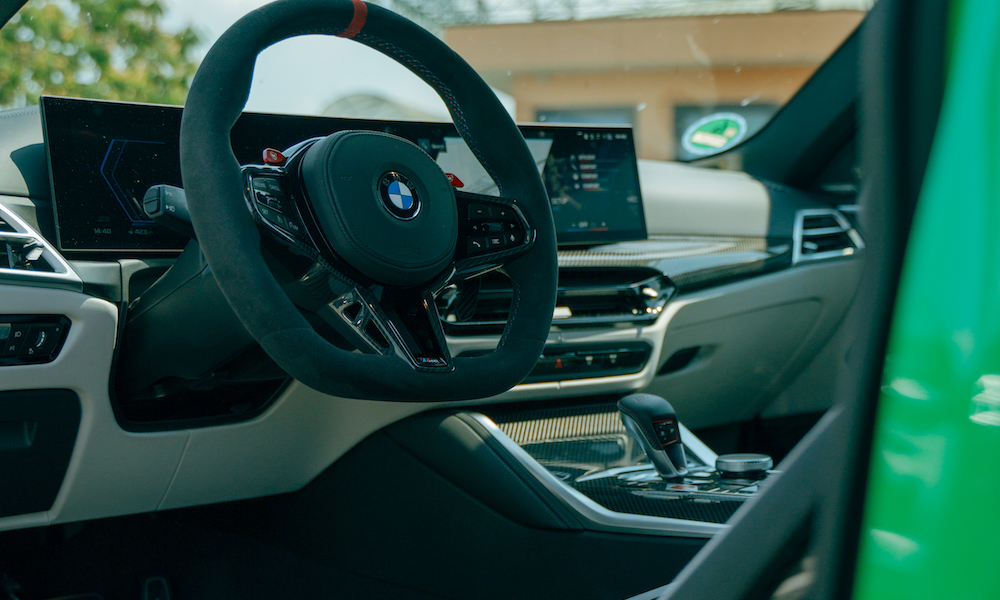
Photo: BMW
When it comes to the interior at large, it is a pleasant and spacious place to spend time in. The steering wheel, although large in size, falls in your hands well and most of the relevant control buttons on the wheel are never more than a touch away.
As with most modern brands, BMW has moved in the general industry direction of increasingly having more traditional instrument clusters and analog controls replaced by screens.
While the M4 Competition isn’t as an egregious offender as some other cars, it has still diverted more traditionally analog functions such as air conditioning control away from buttons the center console and onto the screen fitted on the dashboard.
This is something I personally don’t like, both aesthetically and from an ergonomics standpoint. Say, for example, you want to adjust the air conditioning – something you’ll be inclined to do during a roasting summer’s day in Italy.
To achieve this task, it first requires you to figure out the working order of the system and then, when you want to change settings while driving, divert attention away from the road and towards the screen for a few seconds.
Again, this is not a BMW-specific issue rather than a symptom of car design in the industry at large, but it is present in the M4.
When it comes to an interior aspect that is appealing, the optional carbon bucket seats were a revelation. Heading in, there was a slight worry that comfort was going to become a problem during our multi-hour drive from Germany to Italy.
Thankfully, as I soon found out, those fears were unsubstantiated. While they gave the firm grip as expected from seats built with a view towards track use, not once did discomfort creep in as the miles flew by.
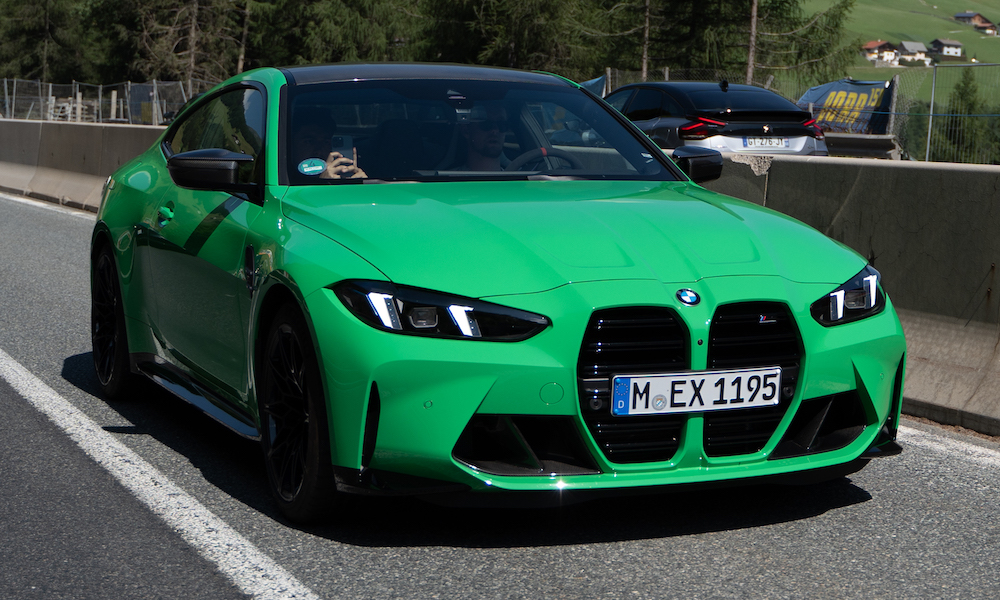
Photo: BMW
It all contributed to the M4’s overall impression of a strong long-distance cruiser, but one where the performance was never far away.
With the likes of damper response and braking system on Comfort but the engine on Sport Plus, passing the Brenner Pass and traversing the Alps to get from Austria to Italy was simply a joy.
The Sport Plus mode is where the engine is at its best. Efficient mode is fine for less exciting highway stretches and day-to-day driving in town, but as expected, the throttle response is noticeably tardier.
Activate Sport Plus and not only does the engine respond a lot faster, but it gives you the full grunt and song of the inline-six engine.
Overall, the M4 Competition xDrive excels as an all-rounder. Push it and it rewards you with the refined confidence that encourages you to further explore its true potential.
But on the other hand, it felt just as easy to explore on Italy’s packed autostradas or often tight and bumpy provincial streets.
The exterior design might not be for everyone, but don’t let that discount the fact that this is simply a very, very good GT car.





















